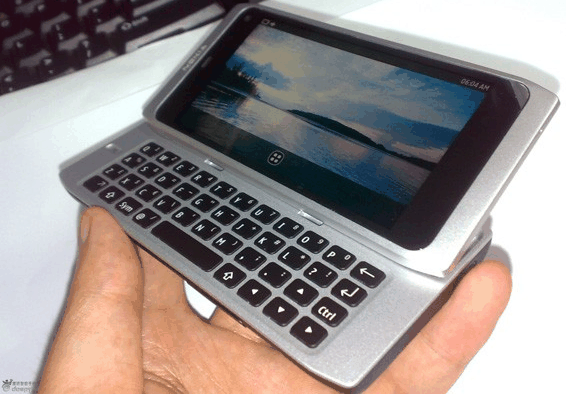Go to any N9-related post that mentions the possibility that it will use an Intel Atom chip, and you will find comments such as:
“atom = worst battery life ever” – disgruntled commenter on Engadget
Before we begin, let’s make it clear that the possibility of the Nokia N9 using an Intel chip is just one of many rumors. Of course, Nokia itself hasn’t even confirmed that the upcoming Meego phone will be called N9 – that’s just another rumor.
But why all this hate against Intel? We are going to assume that the upcoming phone will be called the N9 and will be running Meego on an Intel Atom chip. Is it possible?

Atom = worst battery life ever
Going back to the comment that started this whole thing, does Atom really equal the “worst battery life ever”?
Ah…This is where many people confuse two Atoms. These are two very different Atoms. The one which everyone is using right now on their netbooks (and maybe tablets) is a totally different animal from the Moorestown chip that Intel is developing. The new one is optimized for mobile use.
The Moorestown chip consumes just 21 milliwatts in idle state, as against the 1.2 watts drawn by current CPU. That’s 1.75 percent of the power consumption! Web browsing? How about 5% of the power consumption of current chips?
It’s clear that the Moorestown is a different breed altogether. It’s nothing like the current breed of Atom chips. Considering that even the current chips enable netbooks to last for more than 7 hours, the Moorestown should last longer than that.
Intel claims that it will allow devices to last 10 hours in stand-by, 2 days of music playback and 5 hours of video playback. That’s a lot of juice!
How does Intel manage it? That’s thanks to a piece of ingenuity that allowed Intel to figure out how to shut off power supply to unused transistors. This means that only those areas of the chip that are being used draw any power. In conventional chips, power is supplied to all transistors. This allows power usage to be reduced by 2 to 3 times in active use, and 50 times in idle state (since almost all islands are off). You can find more on this here.

Slow performance?
How about the performance? A long-lasting device is pretty useless if it runs slowly, isn’t it?
Check out this test. Ok, so maybe it doesn’t really pitch the Moorestown against the A4 in the iPad, but that’s because it is not available yet. If the Menlow can beat the A4, then we are sure the Moorestown can, too. How can we be so sure? The Menlow chip, never used on phones because of its high power consumption, outperformed the iPhone 3GS’s chip (Texas Instruments OMAP3430) by 60%. Moorestown is going to double Menlow’s fill rate using its 400 MHz GPU. Intel has revamped the CPU-to-Graphics Bus. The bandwidth is now 6.4/4.3 Gb/s (read/write).
How does all this matter to you, though? It does, if you like watching high definition videos. So far, no other chip except Moorestown (save the NVIDIA Tegra 2, based on ARM architecture) decodes 1080p videos at 30 fps. Also imagine what it is going to do for gaming! And if you are a business minded person, then apps are going to do a lot more for you.
So is the Intel Moorestown slow, compared to ARM chips? No way!
The competition
 Moorestown is up against some pretty tough competition, however. Back in early 2010, when Intel was demonstrating it at CES, the world might have been blown away. Not anymore. NVIDIA is out with the Tegra 2. People are already blown away. The “2”, as you might have figured out, is for dual-core.
Moorestown is up against some pretty tough competition, however. Back in early 2010, when Intel was demonstrating it at CES, the world might have been blown away. Not anymore. NVIDIA is out with the Tegra 2. People are already blown away. The “2”, as you might have figured out, is for dual-core.
We cannot compare these two chips directly. Not only is one of them not available yet, they also run completely different software (thanks to completely different architecture). In any case, Moorestown’s low power consumption might be its only saving grace. It is going to be difficult to beat Tegra’s performance. And going by what we know of Intel’s progress so far, the Tegra 2 won’t be beaten, at least not by Moorestown.
So…is Nokia using it?

The question everyone had been asking all along: Is it possible that Nokia might use the Moorestown? We would give it a 50% chance. The problem right now is, we don’t know when Nokia is going to announce/launch its Meego phone. If it is going to be at Mobile World Congress, which is coming up pretty soon, then the chances are very less. Moorestown doesn’t seem to be ready. And Nokia knows better than to release a phone with half-baked internals. This will be Nokia’s only chance at breaking into the US market, and it is not going to risk anything because of the chip. If Nokia is going to delay it by a few months, then Moorestown has a better chance. Again, a delay is unlikely because Nokia has already delayed it enough. So Moorestown has everything stacked against it right now.
What does increase the chances of it being used is the Nokia-Intel partnership. In fact that, we would say, is the only thing in favor of Moorestown for the N9 right now. They have formed a strategic alliance, and they are going to help each other out. Maybe Nokia will get them cheap, or maybe using them was a part of their initial contract.
It is, however, more possible that Nokia might use it on an upcoming tablet or netbook. A tablet from Nokia/Intel is not unlikely, considering how all big gadget companies are entering the market. And Meego seems to be the perfect OS for a tablet. A netbook is not unlikely too, considering Nokia has already launched smartbooks before (and need we even talk about Intel?).
So there’s your Moorestown – fast, efficient, but not yet in the market.










Comments